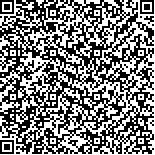| 引用本文: |
刘艺璇, 吴昊洋, 罗政, 蔡昱哲, 邓奕辉, 李定祥.基于UPLC-QE-MS代谢组学探讨青钱柳治疗糖尿病合并非酒精性脂肪肝大鼠的作用机制[J].湖南中医药大学学报,2024,44(11):1959-1967[点击复制] |
|
| |
|
|
| 本文已被:浏览 1410次 下载 851次 |
| 基于UPLC-QE-MS代谢组学探讨青钱柳治疗糖尿病合并非酒精性脂肪肝大鼠的作用机制 |
| 刘艺璇,吴昊洋,罗政,蔡昱哲,邓奕辉,李定祥 |
| (湖南中医药大学中西医结合心脑疾病防治湖南省重点实验室, 湖南 长沙 410208;湖南中医药大学, 湖南 长沙 410208;湖南中医药大学针灸推拿与康复学院, 湖南 长沙 410208) |
| 摘要: |
| 目的应用非靶向肝脏代谢组学探讨青钱柳对糖尿病合并脂肪肝大鼠的作用机制。方法将SD大鼠随机分为空白组、模型组、青钱柳组(0.9 g·kg-1),每组6只,建立糖尿病合并非酒精性脂肪肝动物模型,连续灌胃4周后取材。采用全自动生化分析仪测定大鼠空腹血糖(fasting blood sugar,FBS)、谷丙转氨酶(alanine aminotransferase,ALT)、谷草转氨酶(aspartate aminotransferase,AST)、甘油三酯(triglyceride,TG)、总胆固醇(total cholesterol,TC);ELISA法检测肝组织谷胱甘肽(glutathione,GSH)、丙二醛(malondialdehyde,MDA)、超氧化物歧化酶(superoxidedismutase,SOD)含量;HE染色观察肝组织病理形态学;油红O染色观察肝脏脂质蓄积;过典酸雪夫氏(peridic acid-schiff stain,PAS)染色观察肝脏糖原及其他多糖类物质分布情况,并通过肝脏代谢组学分析差异代谢通路及相关靶点。结果与模型组相比,青钱柳可以显著增加模型大鼠肝组织的GSH、SOD水平,显著降低FBS、TG、ALT、AST指标水平(P<0.001),并减轻肝脏脂质沉积。通过代谢组学分析确定了8个生物标志物及1条主要的代谢通路。结论青钱柳可以减轻糖尿病合并脂肪肝大鼠肝脂沉积与血糖水平,其机制可能与调节丁酸代谢有关。 |
| 关键词: 代谢组学 青钱柳 2型糖尿病 非酒精性脂肪肝 丁酸代谢 |
| DOI:10.3969/j.issn.1674-070X.2024.11.004 |
| 投稿时间:2024-04-10 |
| 基金项目:国家自然科学基金面上项目(81874416);湖南省科技创新计划资助(2020RC4050);湖南省卫生健康委员会科研课题(D202303067824);长沙市自然科学基金项目(kq2208188);湖南省研究生科研创新项目(CX20220787)。 |
|
| Mechanism of action of Cyclocarya paliurus in treating diabetic rats with nonalcohol fatty liver disease based on UPLC-QE-MS metabolomics |
| LIU Yixuan, WU Haoyang, LUO Zheng, CAI Yuzhe, DENG Yihui, LI Dingxiang |
| (Key Laboratory of Hunan Province for Integrated Chinese and Western Medicine on Prevention and Treatment of Cardio-cerebral Diseases, Hunan University of Chinese Medicine, Changsha, Hunan 410208, China;Hunan University of Chinese Medicine, Changsha, Hunan 410208, China;School of Acupuncture-moxibustion, Tuina and Rehabilitation, Hunan University of Chinese Medicine, Changsha, Hunan 410208, China) |
| Abstract: |
| Objective The application of non-targeted hepatic metabolomics and animal experiments was utilized to investigate the mechanisms by which Cyclocarya paliurus ameliorates diabetic fatty liver. Methods SD rats were randomly assigned to control, model, and Cyclocarya paliurus group (0.9 g·kg-1), with six rats in each group. An animal model of diabetes mellitus combined with non-alcoholic fatty liver disease was established, and tissue samples were collected after four weeks of continuous gavage. Fasting blood sugar (FBS), alanine aminotransferase (ALT), aspartate aminotransferase (AST), and triglyceride (TG) levels were measured using an automatic biochemical analyzer. The levels of glutathione (GSH), malondialdehyde (MDA), and superoxide dismutase (SOD) in liver tissues were quantified using ELISA. HE was employed to observe liver histopathology and morphology, while Oil Red O was used to assess liver lipid accumulation. Periodic acid-Schiff (PAS) staining was conducted to evaluate the distribution of liver glycogen and other polysaccharides. Additionally, differential metabolic pathways and related targets were analyzed through hepatic metabolomics. Results Compared to the model group, Cyclocarya paliurus significantly increased the levels of GSH and SOD in the liver tissues of the model rats, while also significantly decreasing the levels of FBS, TG, ALT, and AST (P<0.001), and reducing hepatic lipid deposition. Metabolomics analysis identified eight biomarkers and one major metabolic pathway. Conclusions Cyclocarya paliurus attenuates hepatic lipid deposition and blood glucose levels in rats with diabetes mellitus combined with fatty liver, potentially through the regulation of butyric acid metabolism. |
| Key words: metabolomics Cyclocarya paliurus type 2 diabetes mellitus nonalcoholic fatty liver disease butyrate metabolism |
|

二维码(扫一下试试看!) |
|
|
|
|




